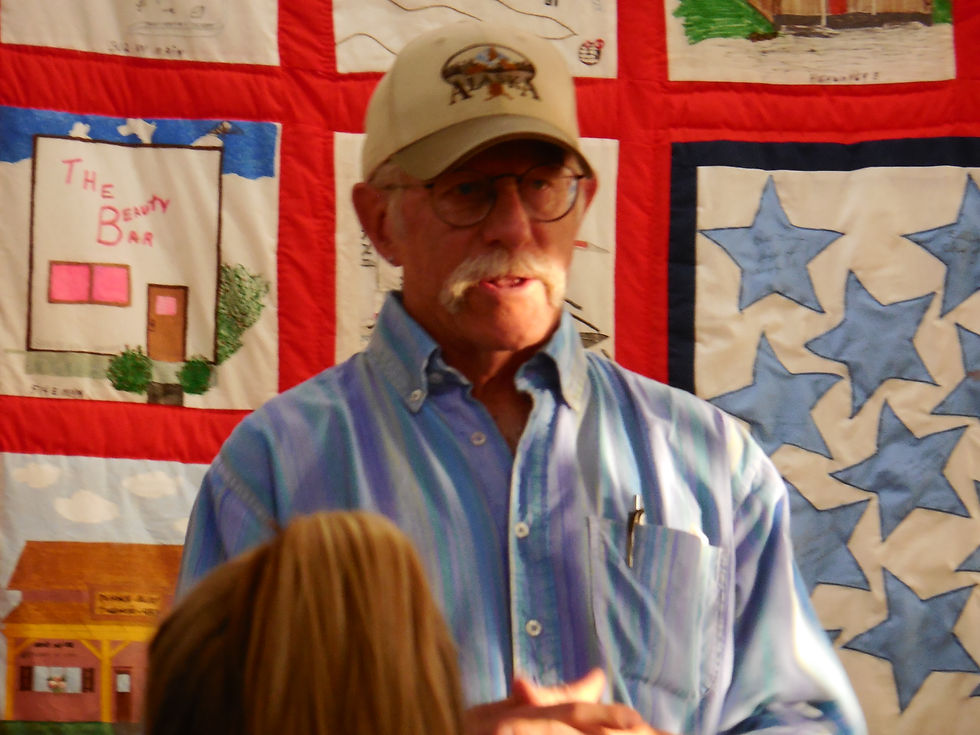The Wickiup Project
The start of summer brought a great addition to the Rangely Outdoor Museum's displays. The outside grounds now house a recently built Wickiup shelter. The Wickiup stands over 10 feet and was built by a group of archeologists, Colorado Mesa University students, and Dan Fiscus and his family. The leader of the Wickiup project, Curtis Martin, works as a research archaeologist in Grand
Junction, Colorado, at the Grand River Institute and Dominquez Archaeological Research Group Inc. He is one if the leaders of the Colorado Wickiup Project, a project put on by the Dominquez Archaeological Research Group Inc. to find, document, research, and teach about the Wickiups that are found scattered throughout Colorado.

Wickiups are structures made of tree branches and trunks, where Native Americans would sleep and live. It is thought that most of these structures were only temporary, built for short stops as the people migrated. Wickiups have been linked to the Ute culture, and can be traced back to the protohistoric (the era between prehistory and history) and early historic eras of the Ute. The Wickiups are dated by the wood chopped down and used, and the artifacts found around the Wickiup sites. Thousands of beads have been found scattered on the ground surrounding the structures. Despite their resemblance to tipis, Wickiups were not permanent or even semi-permanent structures, and were rarely covered in large hides. They were sometimes covered in small branches and plants to keep the cold out, or to create shade. The Colorado Wickiup Project goes to different museums and organizations to help build replicas of Wickiups so the public can see and learn about them. Though the Wickiup located at the Rangely Outdoor Museum is a larger model, it matches the size of some Wickiups that have been found in Colorado.

After the Wickiup was built at the Rangely Museum, Curtis Martin did a presentation about Wickiups at the Museum's monthly fireside. The weather brought everyone inside the main museum building, where Martin did his presentation. He discussed the different Wickiup sites he had worked on, and the history of the Ute and their structures. Over twenty people attended the presentation and learned about the intriguing history of the Wickiup. Much of the evening was spent listening to Martin answer the audiences many questions. His passion for Wickiups and Native American history was evident from his exuberance and knowledge on the subjects. He passed around pictures of artifacts and sites, and read excerpts from his book, Ephemeral Bounty. The evening seemed to end too soon, and Martin ended the evening by showing some artifacts he had brought for the audience to look at on their way out.
The Museum would like to thank Curtis Martin and his team, the Colorado Mesa University Students, and the Fiscus family for their hard work on the new Wickiup.
To learn more about the Colorado Wickiup Project, visit: http://dargnet.org/projects/cwp/index-cwp.html
Sources
"The Colorado Wickiup Project." Dominquez Archaeological Research Group, Inc. Dominquez
Archaeological Research Group, Inc., n.d. Web. <http://dargnet.org/projects/cwp/index-cwp.html>.
Martin, Curtis. Ephemeral Bounty: Wickiups, Trade Goods, and the Final Years of the Autonomous Ute. Salt Lake City: U of Utah, 2016. Print.
















































